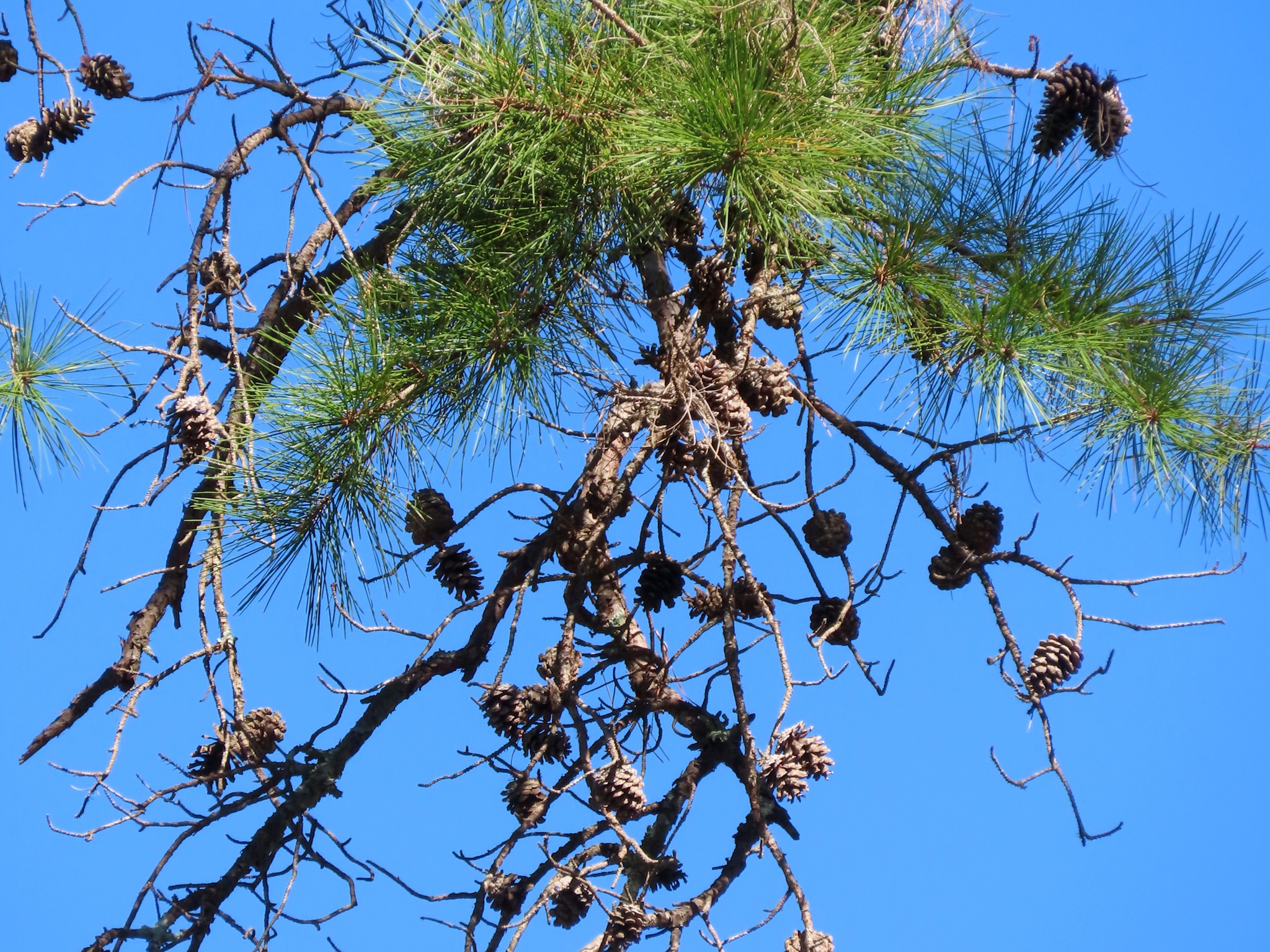

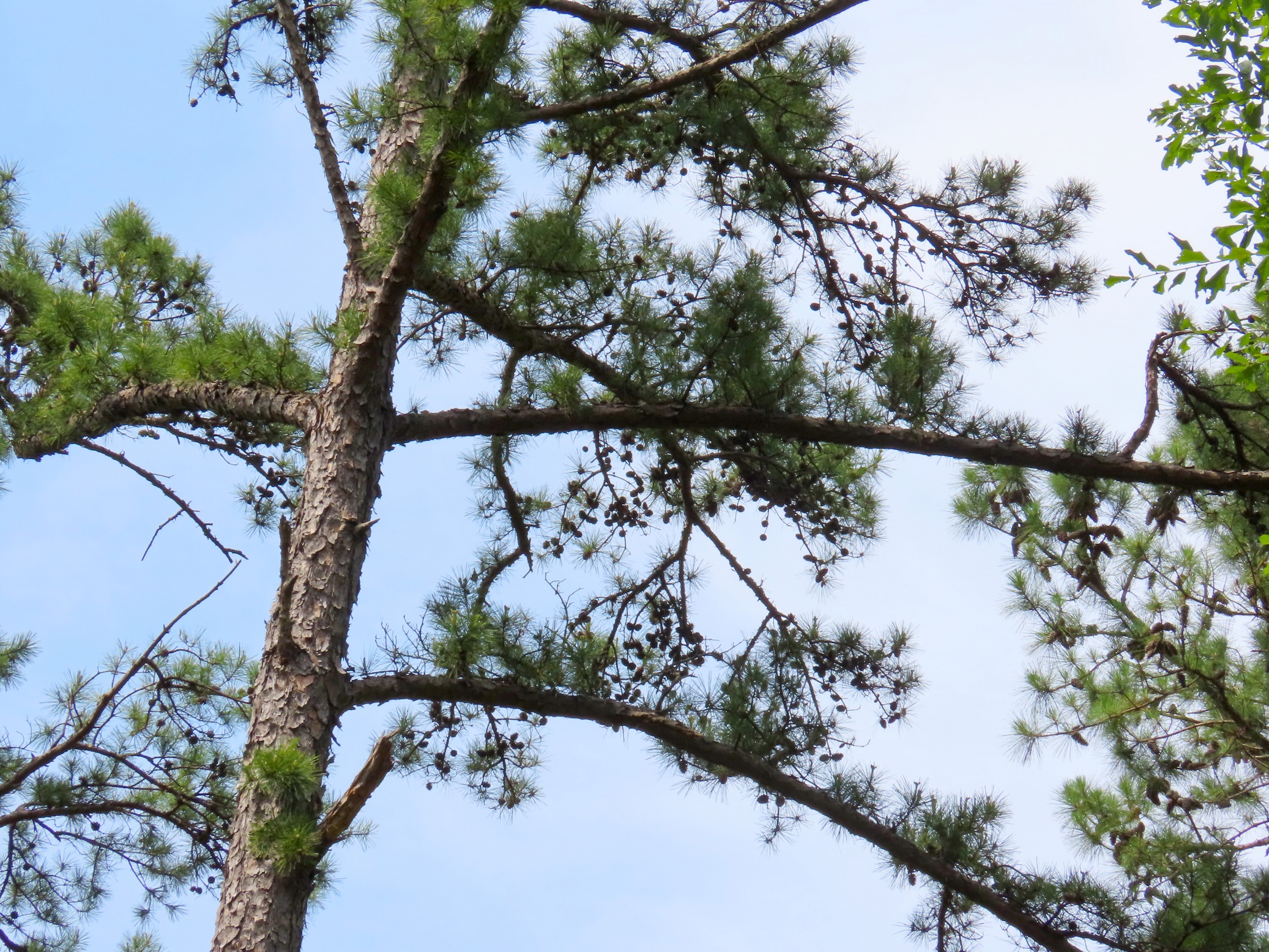
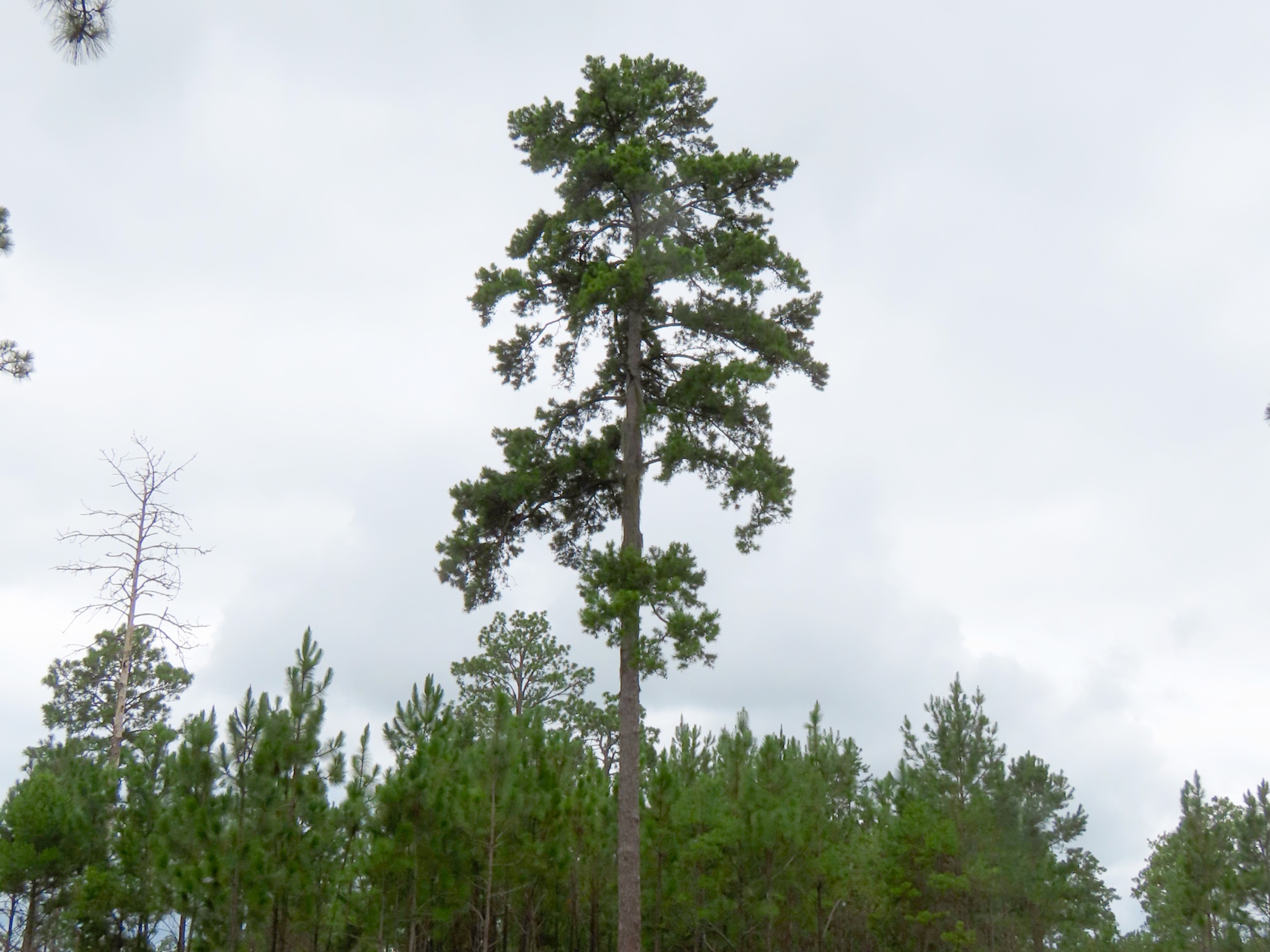
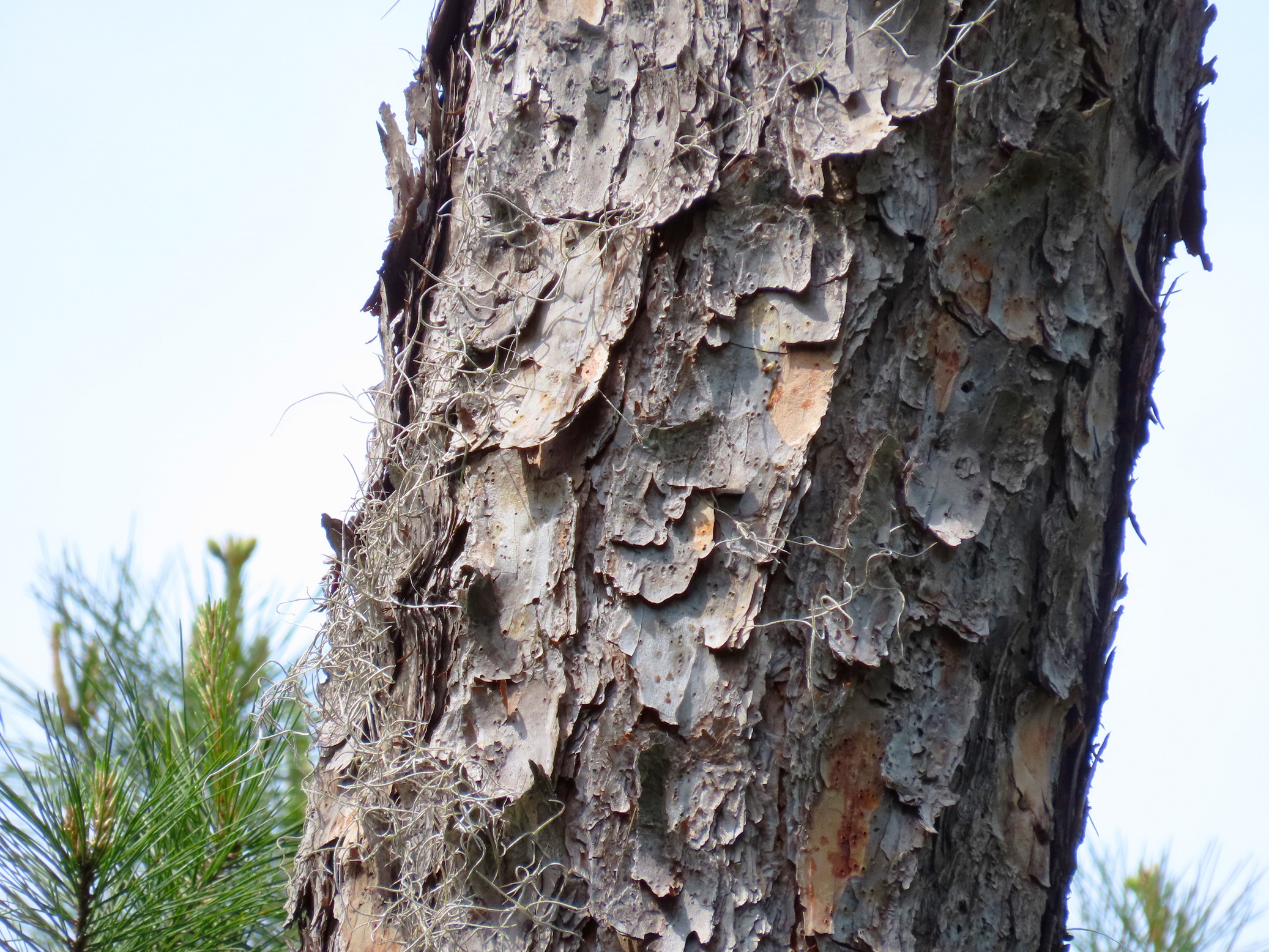
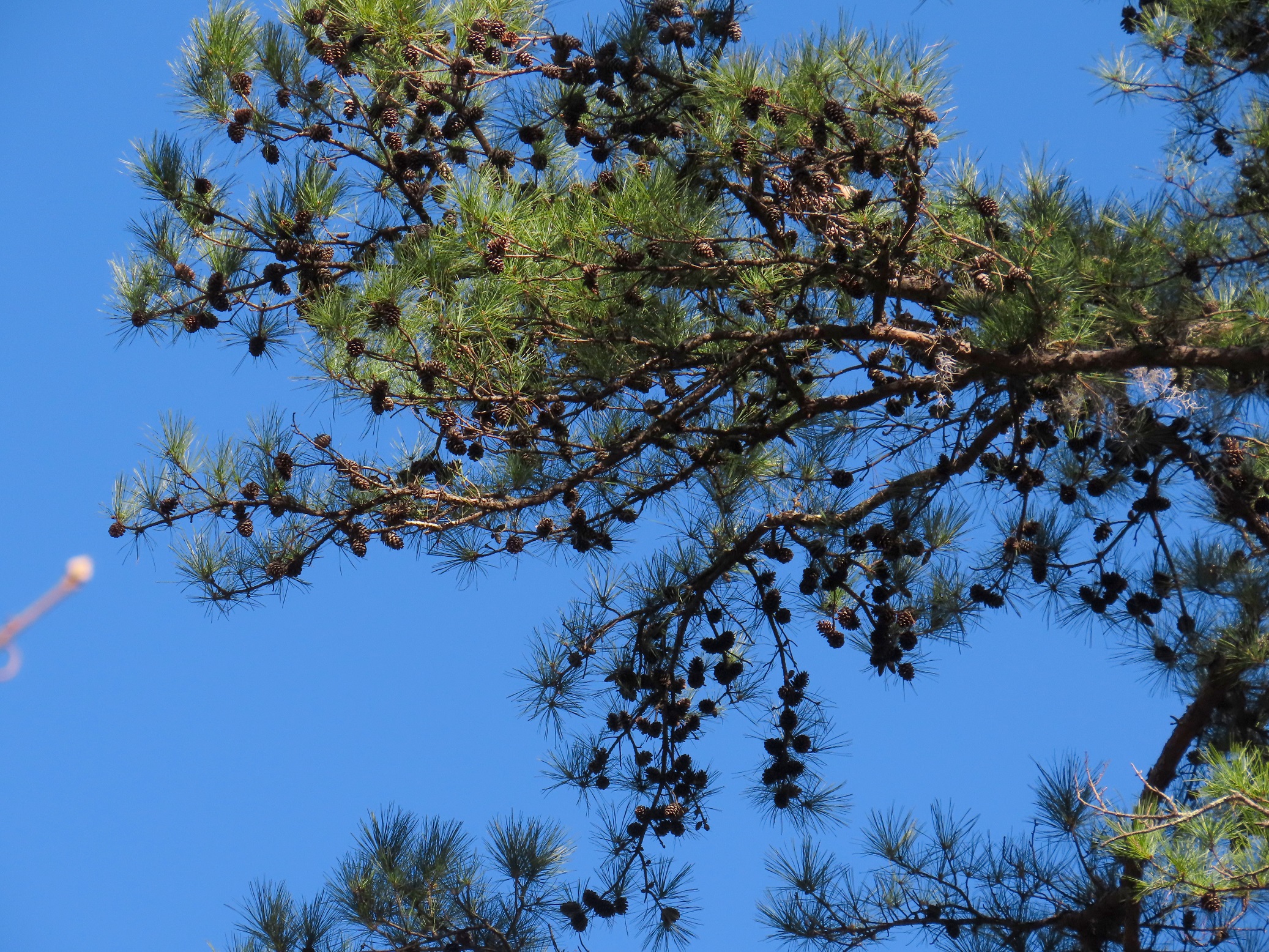
This week for Flora and Fauna Friday we have the pine of the high hills, Shortleaf Pine (Pinus echinata).
Shortleaf Pine is found throughout the Southeast, including all of South Carolina. In the Lowcountry, it’s most often found on hilltops, old dune ridges, and sandhills where it grows on well-drained and often droughty soils. It’s more common inland than it is on the Sea Islands, but still appears reliably on our highest sand ridges on Edisto. You’re as likely to find Shortleaf Pine mixed in with hardwoods as you are with other pines and rarely is it ever a dominate species this close to the coast. However, further up the state, it can often be the predominant pine on certain types of sites. Shortleaf Pine is a fire adapted species and often found growing amidst Longleaf Pine Savannas and along Oak-Hickory ridges. It is not as fire dependent as some other pines but does benefit greatly from fire on the landscape.
Shortleaf Pine is one of the easier pines to identify here on the Sea Islands. It has a character clearly distinct from all our other pines. It’s small for a pine, rarely exceeding one-hundred feet in height or two feet in diameter. Overall it has a thin trunk, straight shape, densely compact crown, and few trailing branches. Upon closer examination, it has key features that help identify it. Its pine cones are small and compact, on average the smallest of all our pines, and often persist upon the branches for several years. Its needles are short and straight, rarely longer than finger length, and generally grown in fascicles of three. The fascicle, the sheathed bundle containing individual needles, is an important feature to examine when identifying pines, especially in the Upstate between young stems of our other short needled pine species. But here in the Lowcountry, we have just one other short needled pine, the Spruce Pine (P. glabra). However, it’s easy to discern from the Shortleaf Pine, with Spruce Pine having twisted needles in fascicles of two most often. (Additionally, Spruce pine grows in floodplains and has uniquely smooth twigs and silvery bark.) Further, Shortleaf Pine has distinct bark from our other pines. Overall, its bark appears smoother with larger, flatter plates compared to Longleaf (P. palustris), Slash (P. elliottii), or Loblolly Pines (P. taeda). But, when you look up close, it reveals the trademark signature of the species, resin pockets. The bark of Shortleaf Pine is peppered internally with resin pockets, which weep resin when the bark exfoliates and leave behind birdshot-sized dimples across the surface of the bark. This is a unique trait of Shortleaf Pine and makes it an easy pine to identify when mature.
Shortleaf Pine is a boon for biodiversity and for bird watchers in the winter months. In my experience, I’ve found it to be particularly attractive to songbirds for a pine. Shortleaf Pine’s dense crown of needles and prolific little cones produce a bounty of seeds and attract insects seeking shelter. These in turn make it a favorite year-round hunting ground for Nuthatches, Chickadees, Titmice, Goldfinches, and Pine Warblers. This effect is further enhanced by its resilience to growing alongside hardwoods in mixed forests.